Today we went east of Tucson to the Pima Air and Space Museum.
“Pima Air & Space Museum, where history takes flight, is one of the largest air and space museums in the world, and the largest non-government funded aviation museum. You'll see more than 300 aircraft and spacecraft including many of the most historically significant and technically advanced craft ever produced, both from the United States and throughout the world.”
Presidential Planes.
390th Memorial Museum
Located on the grounds of the Pima Air & Space Museum, the 390th Memorial Museum features a beautifully restored B17G 'Flying Fortress' named "I'll Be Around," along with many other exhibits, artifacts, memorabilia and documents relating to the group when it was based in England during WWII
Hangar 1 South
The Spirit of Freedom Hangar
Completed in May, 2007, The Spirit of Freedom Hangar created an additional 35,000 square feet of modern exhibition space, and houses some of the world's rarest aircraft.
They include the oldest existing SR-71 Blackbird, the only existing Martin PBM-5A "Mariner," on loan from the Smithsonian Institution, and the very rare North American F-107 “Ultra Sabre."
The Bumble Bee was designed and built for the sole purpose of taking the record for the world's smallest aircraft. Robert Starr had been involved as pilot and designer in two previous record holding smallest aircraft dating back to 1949. Feeling that he had not received the amount of credit he was due for his participation in those efforts he decided to take the record for himself. In 1979, he began work on the Bumble Bee and after five years of design and construction the tiny aircraft was ready for flight.
The first flights of the Bumble Bee were on January 28, 1984 at Marana, Arizona and the aircraft was credited in the Guinness Book of World Records as the smallest aircraft ever flown. The record stood until August of that year when one of Starr's former partners built and flew an even smaller aircraft. The records were modified slightly to give Starr the record for the smallest biplane while the other contestant took the record for the smallest monoplane. Starr broke his own biplane record in 1988 with the Bumble Bee II. Unfortunately, that aircraft was destroyed in a crash not long after setting the record.
Robert Starr donated the original Bumble Bee to the Pima Air & Space Museum in 1990.
The last of a small family of aircraft built by Lockheed's famous Skunk Works, the SR-71 is one of the most recognized aircraft ever built. Design of what would become the Blackbird began in 1958 with a request from the CIA for an aircraft to replace the Lockheed U-2. The aircraft the CIA got was a single seat, twin engine, delta-winged design called the A-12. Even though the other versions of the Blackbird were known publicly the existence of the A-12 remained secret until 1982. The type made its first flight from the Groom Lake, Nevada test site in April 1962. Further development resulted in three different 2 seat versions; the YF-12 interceptor, the M-12 which carried the D-21 drone, and the SR-71 strategic reconnaissance aircraft. Slightly larger than the A-12 and with a longer range the first SR-71 flew in December 1964. In total 50 aircraft in the Blackbird Family were built with 30 of them being SR-71s. It is hard to overstate the technological achievement represented by the Blackbird. It holds world speed and altitude records and is the only manned, jet-powered aircraft to exceed Mach 3.
A brief list of some of the records held by the Blackbird:
July 28, 1976 -World absolute speed record - 2,193 mph
July 28, 1976 - World absolute record for sustained altitude - 85,069 feet
September 1, 1974 - New York to London - 1 hour 55 minutes 42 seconds
March 6, 1990 - Los Angeles to Washington, D.C. - 1 hour 4 minutes 2 seconds
This is Teri’s favorite plane.
The Model 23 is the first of Learjet's series of small business jet aircraft. First flown in 1963, the Model 23's performance, good looks, and a sense of power and prestige made the aircraft such a success that the name Learjet is still synonymous with the entire class of small business jets no matter what company actually built them. Compared to modern business jets, some of which are the size of airliners, the Model 23 is small and cramped, but in an era when business aircraft were all propeller driven it stood out and created the demand for larger, faster and more comfortable aircraft that continues unabated today
Hangar 3
Dedicated to World War II aircraft, the exhibits include a B-24 "Liberator" heavy bomber, a Mitchell B-25 of the type used in the Doolittle raid on Tokyo, an A -25, and suspended overhead are rare combat gliders.
You'll also view the Fi-156 "Storch," a rare WWII German light observation plane, along with one of the few remaining examples of the German V-1 "Buzz Bomb," displayed on a replica launching ramp with attending ground crew.
The Gunner in this belly must be under 5’10'” in height and under 150 pounds it fit.
Hangar 4
The B-29 was designed as what the Army Air Forces called a "Hemisphere Defense Weapon." The 1940 specifications called for an aircraft capable of carrying 2,000 pounds of bombs for 5,333 miles at a speed of 400 miles an hour. While it did not meet all these goals the B-29 still carried more bombs, higher, farther and faster than any other bomber of World War II. It also introduced pressurized crew compartments to military aircraft, which allowed the crews to forego the heavy and awkward cold weather flying clothes that crews of other planes, were forced to wear. Over 4,000 Super Fortresses were built and many continued to serve the U.S. Air Force into the early 1950s as bombers, reconnaissance planes, and as refueling tankers.
Outside Aircraft
Helicopter Row
The C-118 is a miltarized version of the Douglas DC-6 airliner. Just over 100 C-118s were acquired for use by the Air Force as passenger and cargo transports. The main difference between the military and civil versions is the installation of a large cargo door on the left side of the aircraft. The C-118s were used primarily as passenger aircraft and several eventually served in the Presidential fleet. This aircraft served as the official Air Force One for Presidents Kennedy and Johnson. It was the last propeller driven aircraft to be designated as the primary Presidential transport. The VC-118A was overshadowed during its service by the introduction of the first Boeing VC-137s. Both Presidents preferred to travel in the larger, faster jet aircraft and the VC-118 was used primarily for short trips to airports that were too small for the big Boeings. Once the VC-137 became the primary Presidential aircraft the VC-118 was used as a back up plane and to transport lower ranking VIPs.
Areo Spacelines 377-SG Super Guppy
Based on the Boeing C-97 cargo plane and the 377 airliner the huge "Guppy" super-transports are some of the most unique aircraft ever built. Designed to carry very large, but relatively light cargos the Guppies were built from parts of retired U.S. Air Force C-97 Stratofreighters and airline 377 Stratocruisers. The planes proved to be very useful for carrying segments of rockets and much of the Saturn rocket that powered the Apollo Program was transported in the Super Guppy. This is the second Guppy, the first "Super Guppy" built. Its parts came from at least two different aircraft. The majority of the airframe came from a former Pan American Airways airliner. However the wings, engines and forward fuselage came from one of the Air Force's experimental turbo-prop powered YC-97J aircraft, 52-2693. The Super Guppy continued in use by NASA until 1991 when it was retired in favor of a younger Super Guppy.
Among all the aircraft situated throughout the museum grounds, one that stands out for an assortment of reasons including its size and its design, is the B-36J Peacemaker bomber. With its height, uniquely ribbed and shaped glass cockpit & nose, and slightly swept back wings with six pusher props and four jet engines, it's an ominous sight. It even seems to dwarf the mighty B-52, of which there are 3 at the museum. However, the B-36J certainly captures and deserves the viewers attention and imagination.
Boeing KC-135A Stratotanker “Vomit Comet” 1963-2004
This aircraft was used by the Johnson Space Center for Weightlessness training.
Boeing NB-52A Stratofortress Bomber
Used from 1954 to Present. This is one of two modified for the X-15 Project.
Dorothy Finley Space Gallery
The Tucson Ring Meteorite
Then we went to the military side of the road and took these photos through the fence.
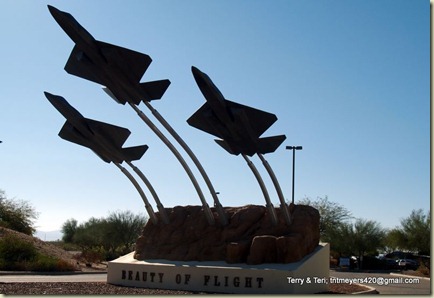

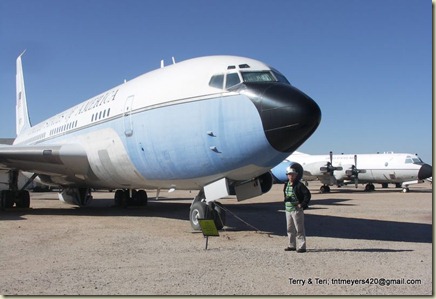
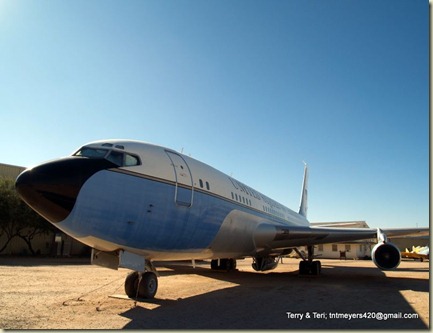
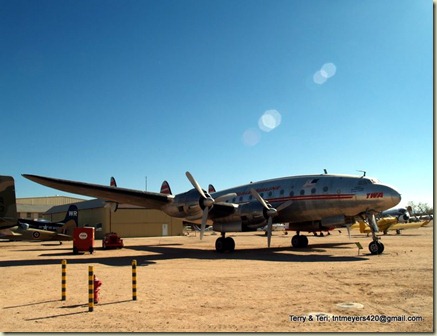
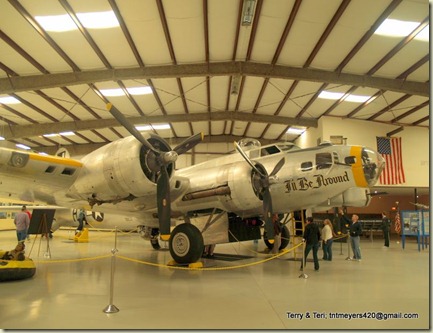
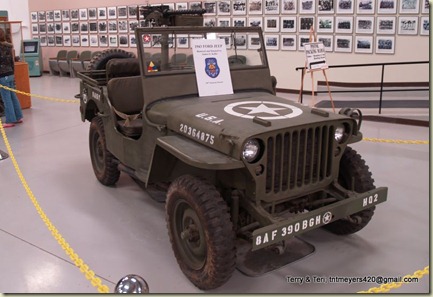
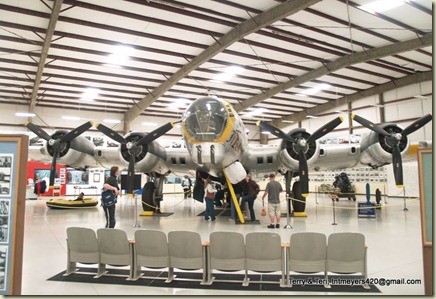
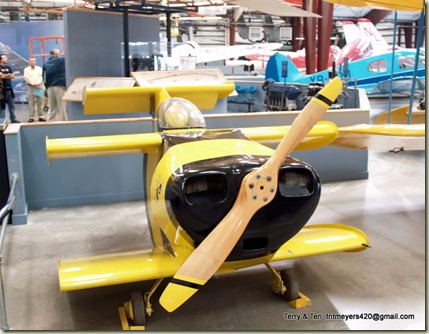
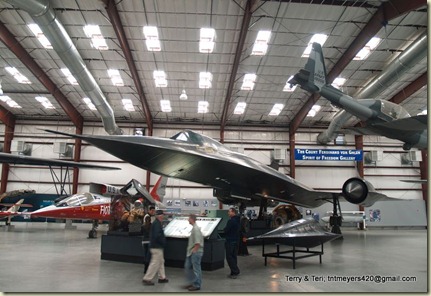
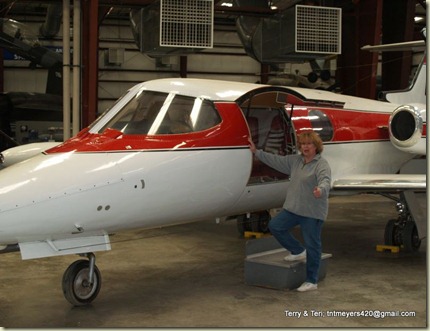
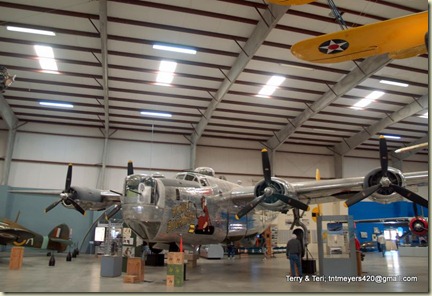
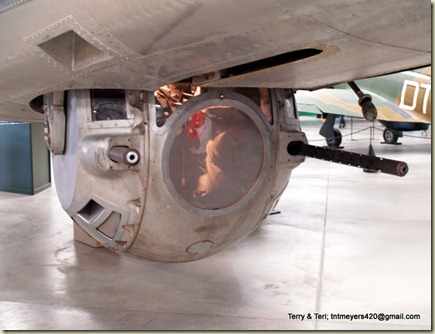
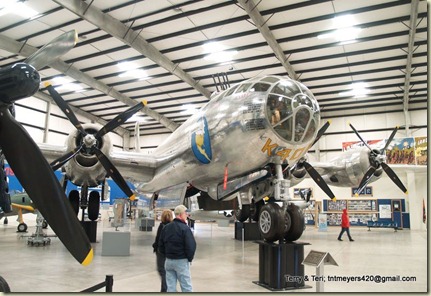
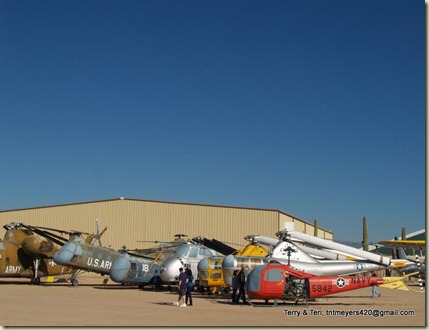

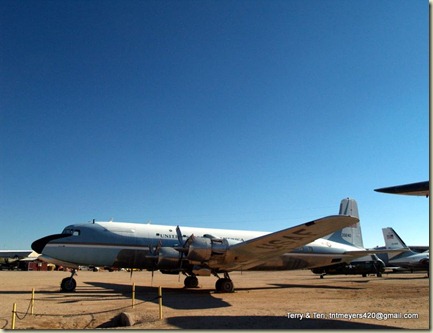
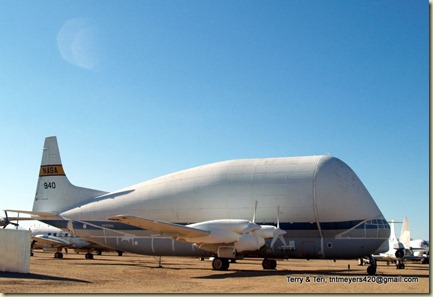
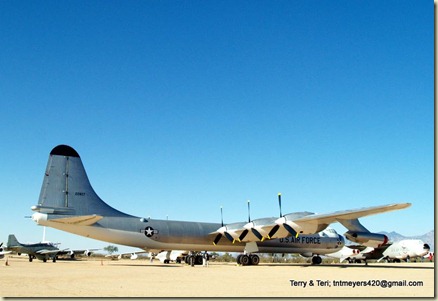
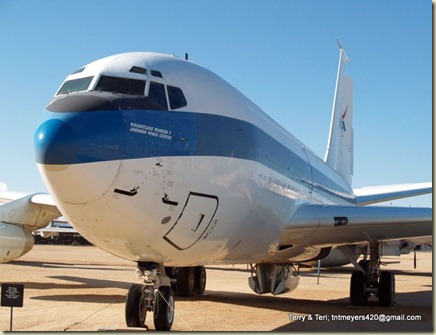
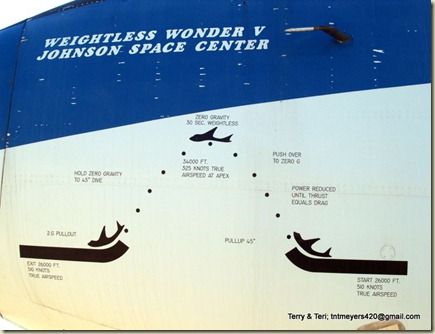
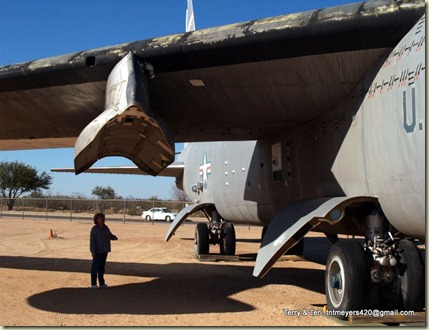
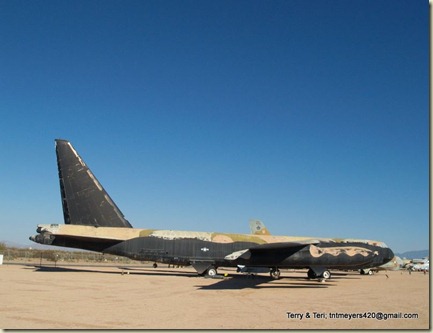
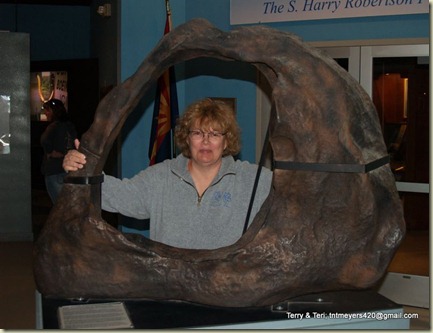
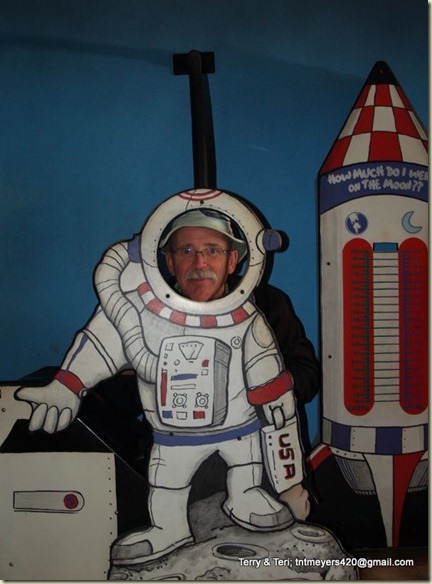
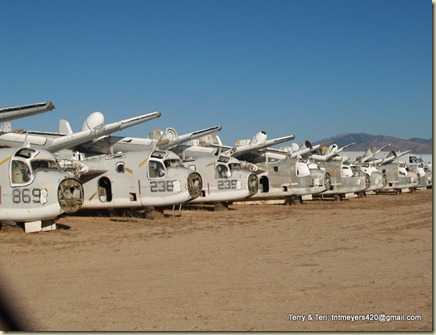

No comments:
Post a Comment